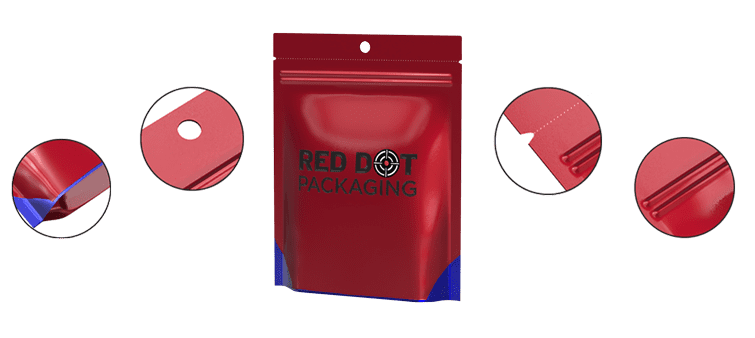How Much Does Custom Packaging Cost?
Discover what influences the cost of custom packaging, from materials and printing to volume and design. Learn how to save on food, personal product, and small business packaging.

How Much Does Custom Packaging Cost?
When it comes to making a strong first impression, packaging plays a critical role, it's often the first thing a customer sees, touches, and remembers about your product. But how much does custom packaging cost, and what makes one solution more expensive than another?
Understanding packaging cost is essential for any business, whether you're a start-up testing a new product or an established brand scaling up production. The right packaging not only protects your product but also enhances its appeal, influences buying decisions, and impacts shipping and storage costs. For small businesses especially, making smart packaging choices can mean the difference between staying within budget and overspending early.
This article will walk you through the key factors that influence custom packaging costs, from materials and printing methods to order volume and design complexity. Whether you're in the food industry, personal care market, or launching a new DTC brand, this guide is designed to help you understand the factors that influence packaging prices and how to make informed, cost-effective decisions.
What Is Custom Packaging and Why Does It Matter?
What makes custom packaging so important? It starts with branding. Your packaging is a physical representation of your company’s identity and values. The color scheme, logo placement, material texture, and overall feel all tell your customer something about what they can expect from your product. Whether you're selling gourmet food, wellness supplements, or artisanal cosmetics, consistent and distinctive packaging helps your product stand out on the shelf, and stick in the customer’s mind.
Beyond visual impact, custom packaging plays a critical role in product protection and compliance. For example, moisture-sensitive products may require high-barrier films, while certain industries, like cannabis or pharmaceuticals, require child-resistant closures to meet legal standards. Packaging isn’t just about marketing, it’s about performance, shelf life, and safety.
Custom packaging is also adaptable to a wide range of industries. In the food sector, it ensures freshness and meets regulatory labeling standards. For personal care products, it adds a premium feel and can accommodate unique form factors like pump pouches or shaped sachets. In retail, it supports strong shelf appeal and easy handling, from hang holes for display to resealable features for customer convenience.
In short, custom packaging isn't just a finishing touch, it's a strategic tool for delivering value, ensuring safety, and elevating your brand in the marketplace.
Factors That Influence Packaging Cost
Understanding what drives the cost of custom packaging helps you make informed decisions that balance performance, appearance, and budget. Here are the primary factors that impact pricing:
Materials
The type of material you choose is one of the most significant cost drivers. Options range from basic plastics to high-performance barrier films, foil laminates, paper-based substrates, and sustainable alternatives like compostable PLA or post-consumer recycled (PCR) films. Each material has different costs based on durability, print compatibility, environmental impact, and barrier properties. For example, recyclable mono-materials may cost more upfront but offer long-term savings and sustainability benefits.
Packaging Type
Different packaging formats come with different costs. A simple pillow pouch made from rollstock is typically more cost-effective than a custom printed stand-up pouch with a zipper and spout. Rollstock films are ideal for automated fill-and-seal operations, which can reduce labor costs, while pre-made pouches or die-cut shapes often involve higher manufacturing complexity and material usage.
Size and Dimensions
Larger pouches naturally require more material, but shape and structure also affect pricing. A flat pouch with no gussets is simpler and cheaper than a bottom-gusseted stand-up pouch or a shaped pouch with contoured die lines. Oversized packaging may also increase shipping and storage costs, adding to the total investment.
Print Method
The printing technology used can significantly impact cost depending on your order volume and design needs.
- Digital printing offers high-quality, photo-realistic images with no setup fees, making it ideal for short runs and multiple SKUs.
- Flexographic printing is more economical for mid to high volumes, but requires plate fees.
- Rotogravure printing delivers the highest precision and consistency for large-scale production but involves higher setup costs due to engraved cylinders.
Choosing the correct print method is a balance between budget, volume, and visual quality.
Volume and Order Quantity
Packaging cost per unit decreases as your order quantity increases, a principle known as economies of scale. While a small run may have a higher per-unit price due to setup and material minimums, large runs spread those costs across more units, driving down the average cost. This is particularly important for startups and small businesses deciding between short-run flexibility and long-term cost savings.
Finishes and Features
Premium packaging features can add value, but also cost. Matte or soft-touch finishes give a high-end look, while gloss can make colors pop. Specialty effects like holographics or dual-finish (matte and gloss combined) require additional processing. Functional upgrades such as resealable zippers, degassing valves, spouts, laser scoring, or hang holes also increase cost, but can significantly improve user experience and product integrity.
Packaging for Products by Industry
Different industries have different packaging needs, and those needs directly affect cost. From regulatory compliance to user experience and branding appeal, packaging choices are shaped by the product type and market expectations. Let’s look at how custom packaging costs vary across some key industries:
Food Packaging Printing
Food products require packaging that not only looks appealing but also meets strict health and safety regulations. This often means investing in high-barrier materials that protect against moisture, oxygen, and light, preserving freshness and extending shelf life.
Additionally, food packaging often involves regulatory printing requirements, such as nutrition facts, ingredient lists, expiration dates, and lot codes. These add complexity and cost, especially for brands with multiple SKUs or products in different sizes.
Real-world example: A line of artisan granola products might require custom printed stand-up pouches with matte finish, zipper closures, and full-color digital printing for SKU variety. The need for freshness seals and compliance labeling increases both functionality and cost.
Personal Product Packaging
Products in the personal care and wellness space benefit from packaging that conveys luxury, cleanliness, and trust. Custom shapes, soft-touch finishes, and resealable features are common, adding visual and tactile appeal that elevates the brand experience.
This segment often demands premium presentation and unique structures, such as shaped sachets, metallic effects, or child-resistant closures for CBD or supplement products. These features typically increase both production complexity and material usage, influencing the overall cost.
Real-world example: A skincare company launching a new line of face masks may opt for shaped die-cut pouches with gloss-matte dual finish, holographic accents, and a tear notch for easy use. These elements drive brand differentiation but come with a higher price point.
Retail and Small Business Packaging
Retail-ready products must stand out on shelves, whether sold in boutiques, natural grocery chains, or online. For small businesses, balancing customization with cost is especially important. Choosing versatile packaging formats, like rollstock for automated systems or digitally printed short runs, can reduce expenses while maintaining a polished look.
These brands may prioritize low minimums, flexibility, and quick turnaround, especially when testing the market or introducing seasonal SKUs. While smaller volumes typically have higher per-unit costs, digital printing and efficient pouch formats help manage budgets without sacrificing quality.
Real-world example: A startup spice brand might use digitally printed flat pouches with tear notches and kraft paper textures to convey a rustic, organic feel. Ordering small batches allows for market testing without overcommitting on inventory.
Average Packaging Design Price
Design plays a major role in both the effectiveness and cost of custom packaging. Whether you're using existing templates or starting from scratch, your design approach will influence both the upfront investment and the long-term value of your packaging.
Template vs. Custom Design Costs
Using a stock or semi-custom template can be a cost-effective solution for brands that need speed and simplicity. These templates come with predefined dielines and structural layouts, allowing you to quickly apply your branding without investing in structural engineering or custom dieline creation.
On the other hand, fully custom packaging design, built from the ground up around your product, will cost more, but it offers total creative and structural freedom. This is especially valuable for products requiring unique shapes, dispensing features, or precise dimensional fits.
For reference:
- Template-based design might cost $0 to $500, depending on the supplier.
- Custom structural and graphic design can range from $500 to $2,500+, depending on complexity and revisions.
Additional Design-Related Fees
Beyond the initial artwork, there are several other design-related fees that can affect your total packaging cost:
- Dielines: Custom dieline creation involves technical design that maps out the exact cut, fold, and seal areas of your packaging. Some providers offer this for free with a packaging order; others charge a fee.
- Prototyping: Creating physical mockups or samples can cost anywhere from $50 to several hundred dollars, depending on the number of iterations and materials involved. This step is essential for testing form, fit, and function before committing to a full run.
- Revisions: Most design packages include a set number of revisions. Going beyond that can result in added hourly design fees, typically ranging from $50 to $150 per hour depending on the designer’s experience and the complexity of the edits.
Tips for Budget-Conscious Brands
If you're watching your budget closely, there are smart ways to reduce design costs without compromising your packaging quality:
- Start with a standard pouch style or dieline: Using a common shape like a stand-up pouch or flat pouch can eliminate the need for custom engineering.
- Opt for digital printing: Digital allows for quick turnaround and easier design changes without setup costs, making it ideal for small runs and testing.
- Consolidate SKUs: If you’re printing multiple variants of the same product, consider using one universal design with minor variable elements (like flavor or scent) to save on design and plate fees.
- Use in-house branding: If you have internal design resources, you can create the artwork using dielines provided by your packaging supplier, reducing the need for outsourced design help.
- Ask about design bundles: Some packaging companies (like Red Dot) offer design assistance as part of a full-service package, which can reduce standalone costs.
Smart design decisions not only help manage your upfront budget, they also ensure your final packaging communicates value, quality, and brand integrity.
How Volume Affects Pricing
One of the most significant variables in custom packaging cost is volume. How much you order at one time directly impacts the price you pay per unit, and this holds true whether you're producing thousands of units or just testing a new product line. Understanding the relationship between volume and cost can help you plan smarter, reduce waste, and make informed long-term decisions.
Economies of Scale
Custom packaging benefits greatly from economies of scale. Simply put, the more you order, the less you pay per unit. This is because many of the costs associated with packaging, such as setup, material sourcing, and printing plate creation, are fixed. Once those are covered, the incremental cost of producing each additional pouch, film, or label becomes significantly lower.
For example, ordering 100,000 digitally printed stand-up pouches may only cost slightly more than ordering 10,000 in total, but the per-unit cost drops dramatically. This cost efficiency becomes even more pronounced in high-volume runs using flexographic or rotogravure printing, where setup costs are front-loaded but long-run efficiency is unmatched.
Bulk ordering also optimizes shipping and storage costs, especially when working with a supplier like Red Dot that can help you forecast usage and plan inventory strategically.
Considerations for Small Businesses
While bulk pricing is attractive, it's not always practical, especially for small businesses, startups, or companies testing new SKUs. High minimum order quantities can strain budgets and create excess inventory that may become obsolete before it’s used.
That’s why custom packaging providers that offer low minimum order quantities (MOQs) are essential for small brands. Look for flexible partners who support small runs without penalizing you on pricing or turnaround time. Even if your per-unit cost is higher than a large enterprise’s, the ability to stay agile and avoid waste can be a smarter long-term investment.
Additionally, smaller runs allow you to make design changes on the fly, test packaging concepts in real-world conditions, and refine your branding before scaling up.
Digital Printing as a Solution for Short Runs
Digital printing is a game-changer for brands looking to balance flexibility with professional results. Unlike flexo and rotogravure methods, digital printing doesn’t require physical plates or lengthy setup times. This makes it ideal for short runs, seasonal promotions, or SKU diversification.
With digital printing, you can order as few as a few hundred pouches with high-resolution graphics, consistent color, and no compromise on quality. It’s also perfect for multi-SKU strategies, where each variation of your product requires unique artwork but shares the same structure or material.
Whether you're a boutique food brand launching a single product or a health startup introducing multiple formulations, digital printing allows you to test and adapt without overcommitting on volume.
Choosing the Right Partner for Packaging
Custom packaging is not just a product, it's a service. The partner you choose can significantly influence your cost efficiency, production timelines, print quality, and ultimately, your product’s success on the shelf. Selecting the right flexible packaging provider is as important as selecting the right materials or design.
Importance of Experience, Service, and Customization
Not all packaging suppliers are created equal. Working with an experienced partner ensures you get more than just materials, you get guidance, reliability, and technical insight. A provider that understands complex packaging variables (like barrier properties, sealing strength, print methods, and regulatory requirements) can save you from costly mistakes and production delays.
Additionally, customer service matters. When you’re navigating artwork approvals, delivery schedules, or a sudden product launch, having a responsive, solutions-oriented team makes the process smoother and more predictable. And because every brand is different, customization is key. Your packaging partner should be able to offer tailored options, not just stock sizes and generic formats.
What to Look for in a Flexible Packaging Provider
Before committing to a packaging supplier, ask the following:
- Do they offer multiple print technologies (digital, flexographic, rotogravure) to fit your volume and budget?
- Can they handle a variety of pouch styles, such as stand-up, flat, child-resistant, or spouted pouches?
- Do they support low minimums for small brands or pilot runs?
- Are sustainable materials available, including recyclable, compostable, or PCR films?
- Is their turnaround time competitive and consistent?
- Do they assist with design and prototyping, or connect you with trusted design partners?
- Can they scale with your brand as you grow from small batches to national distribution?
Choosing a partner that can flex with your needs, rather than box you into theirs, will save time and money in the long run.
Why Red Dot Packaging Is Trusted by Industry Leaders
With over 40 years of combined technical expertise in flexible packaging, Red Dot Packaging is a trusted partner to startups and global brands alike. We specialize in high-performance custom pouches, rollstock films, and printed flexible packaging designed to make your product stand out, while maintaining strict quality, compliance, and shelf-life standards.
Whether you're producing short runs with complex SKU variation or preparing for a large-scale launch, Red Dot offers:
- Full-service design support
- Custom printing in digital, flexo, or rotogravure
- A wide range of finishes and closures
- Low MOQs and fast turnaround
- Sustainable and innovative material options
From first concept to final delivery, we help you take the guesswork out of packaging and bring your product to market with confidence.
When it comes to custom packaging cost, there’s no one-size-fits-all answer. Your pricing will depend on a variety of factors, from material type and order volume to print method, design complexity, and industry-specific needs. Understanding these variables empowers you to make strategic, cost-effective decisions that elevate your product without breaking your budget.
Whether you're launching a new food line, developing premium personal care items, or scaling up a small business, choosing the right packaging partner is just as critical as choosing the right design. At Red Dot Packaging, we’re here to make that process easier, faster, and more reliable, no matter the size or stage of your brand.
Ready to get a tailored quote for your product? Contact us today or explore our custom packaging solutions and sample gallery to see what’s possible.
Let’s make your product stand out, with packaging that works as beautifully as it looks.

Reach Out
Have questions? Need help? Reach out to us anytime! We're here to listen and assist.


